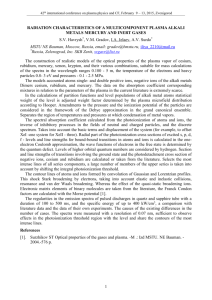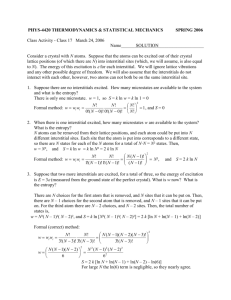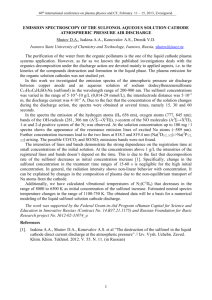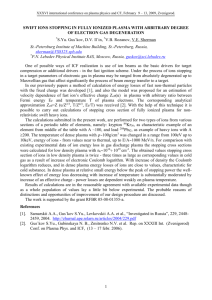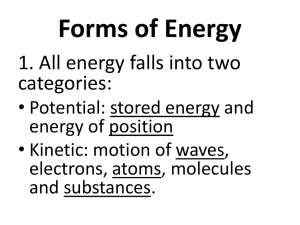kinetics of hydrogen atom radiation emission in the sol plasma in iter
advertisement
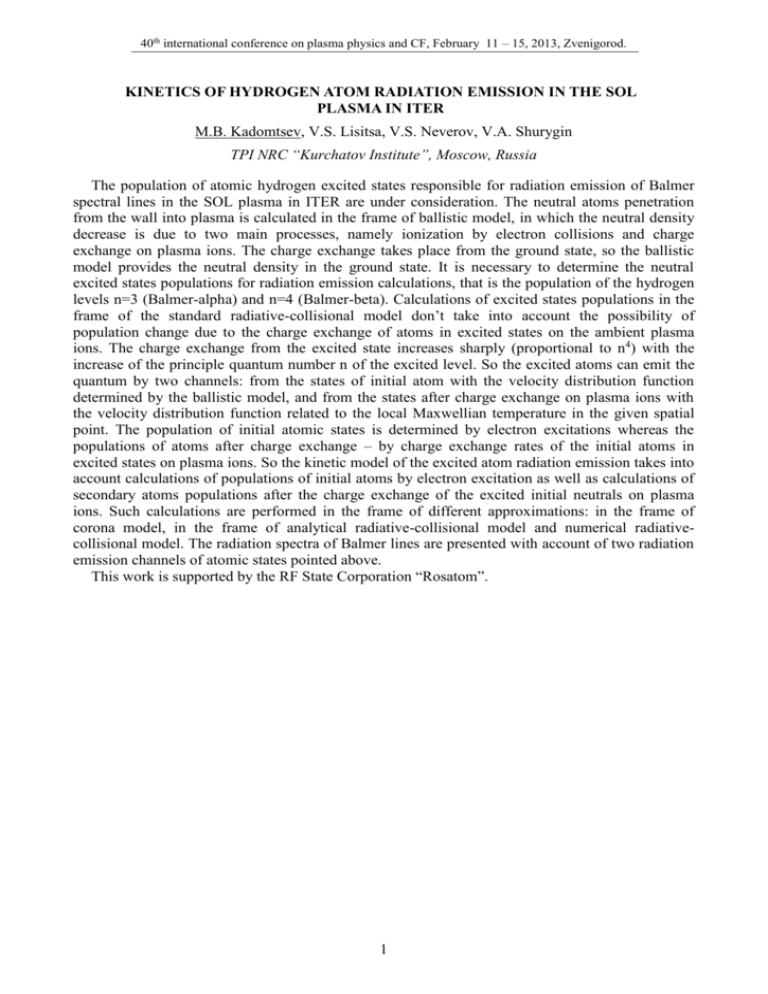
40th international conference on plasma physics and CF, February 11 – 15, 2013, Zvenigorod. KINETICS OF HYDROGEN ATOM RADIATION EMISSION IN THE SOL PLASMA IN ITER M.B. Kadomtsev, V.S. Lisitsa, V.S. Neverov, V.A. Shurygin TPI NRC “Kurchatov Institute”, Moscow, Russia The population of atomic hydrogen excited states responsible for radiation emission of Balmer spectral lines in the SOL plasma in ITER are under consideration. The neutral atoms penetration from the wall into plasma is calculated in the frame of ballistic model, in which the neutral density decrease is due to two main processes, namely ionization by electron collisions and charge exchange on plasma ions. The charge exchange takes place from the ground state, so the ballistic model provides the neutral density in the ground state. It is necessary to determine the neutral excited states populations for radiation emission calculations, that is the population of the hydrogen levels n=3 (Balmer-alpha) and n=4 (Balmer-beta). Calculations of excited states populations in the frame of the standard radiative-collisional model don’t take into account the possibility of population change due to the charge exchange of atoms in excited states on the ambient plasma ions. The charge exchange from the excited state increases sharply (proportional to n4) with the increase of the principle quantum number n of the excited level. So the excited atoms can emit the quantum by two channels: from the states of initial atom with the velocity distribution function determined by the ballistic model, and from the states after charge exchange on plasma ions with the velocity distribution function related to the local Maxwellian temperature in the given spatial point. The population of initial atomic states is determined by electron excitations whereas the populations of atoms after charge exchange – by charge exchange rates of the initial atoms in excited states on plasma ions. So the kinetic model of the excited atom radiation emission takes into account calculations of populations of initial atoms by electron excitation as well as calculations of secondary atoms populations after the charge exchange of the excited initial neutrals on plasma ions. Such calculations are performed in the frame of different approximations: in the frame of corona model, in the frame of analytical radiative-collisional model and numerical radiativecollisional model. The radiation spectra of Balmer lines are presented with account of two radiation emission channels of atomic states pointed above. This work is supported by the RF State Corporation “Rosatom”. 1
